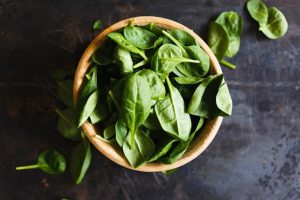Using spinach to grow human heart tissues and mimic the vascular system
Organ transplantation and donation are critical in saving the lives of thousands of people annually. Currently, more than 100,000 people are on an organ donation list waiting for a lifesaving transplant. Despite advances in medicine and awareness of organ donation, there continues to be a shortage of available organs and nearly 22 people a day die while waiting for an organ transplant.
Given the inadequate supply of organ donations, researchers have looked to regenerative medicine to engineer and grow human tissues but have faced challenges to creating viable, functional organs. Dr. Glen Gaudette and collaborators at Worcester Polytechnic Institute, University of Wisconsin and Arkansas State University have developed a novel regenerative medicine process utilizing plants to grow human tissues that overcomes one of the major challenges in human tissue growth. Their findings were recently published in Biomaterials.
Spinach, more than just a great source of vitamins and minerals
One of the major limitations to growing functional tissues is the inability to replicate the vasculature in engineered tissues. A vascular network is critical for supplying tissues with nutrients, fluids and oxygen and has proven difficult to replicate through current tissue engineering techniques. New approaches are “bio-inspired” and utilize decellularization where the extracellular matrix and an intact vascular network are isolated from cellular material to act as a scaffold for new tissues to be grown on.
 Plant and animal tissues differ in their methods of nutrient and fluid delivery, but interestingly, have similar vascular networks. Previous research has demonstrated that the major polysaccharide components of plant cell walls – cellulose, pectin and hemicellulous – are biocompatible with humans and support mammalian cell growth. In addition, plants can be grown quickly and easily, providing an inexpensive and abundant source of vascularized scaffolds.
Plant and animal tissues differ in their methods of nutrient and fluid delivery, but interestingly, have similar vascular networks. Previous research has demonstrated that the major polysaccharide components of plant cell walls – cellulose, pectin and hemicellulous – are biocompatible with humans and support mammalian cell growth. In addition, plants can be grown quickly and easily, providing an inexpensive and abundant source of vascularized scaffolds.
Gaudette and colleagues sought to assess the feasibility of using decellularized spinach leaves as a human tissue scaffold. Spinach leaves, over other plant leaves, were chosen due to their vascular network pattern and density. Spinach leaves were subjected to decellularization and seeded with different types of cells to mimic heart tissue. The spinach leaf vasculature was seeded with human endothelial cells that line human blood vessels and with cardiomyocytes that make up the heart. Their results demonstrated that the spinach leaf scaffolds were able to support endothelial cell and cardiomyocyte growth, and these cells retained their functionality as the cardiomyocytes spontaneously contracted over the course of the experiment.
What does this mean for organ transplantation?
These findings indicate that plant tissues may be a viable scaffold option in regenerative medicine with clinical implications for tissue engraftment and organ transplantation. This approach is still in its early stages and it’s unclear how plant scaffolds would be integrated in vivo, but a regenerative medicine approach over the traditional organ transplantation process has important benefits, most notably availability and rejection. Plants are inexpensive, readily available and can be biocompatible with humans. Additionally, the wide variety of plant types can be used to more closely match with a specific type of organ – highly vascular plants for the heart and wood for bone engineering. Lastly, regenerative medicine approaches to grafts and organ transplantation allow an individual’s own cells to be used, reducing the chances a graft or organ will be rejected and preventing the need for lifetime treatment with immunosuppressive drugs.
Related Products:
- Musculoskeletal Biomechanics Services from Tel Aviv University
- Residue-Free 3D Printed Cell Culture Inserts from East Carolina University
- Plant Cell Wall Carbohydrate Antibodies from University of Georgia


